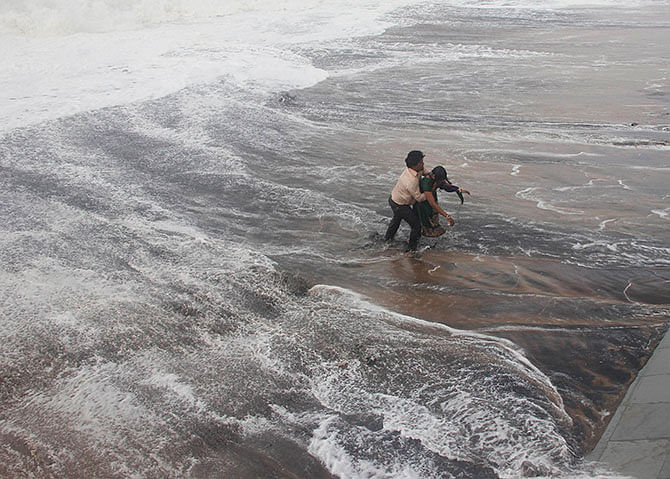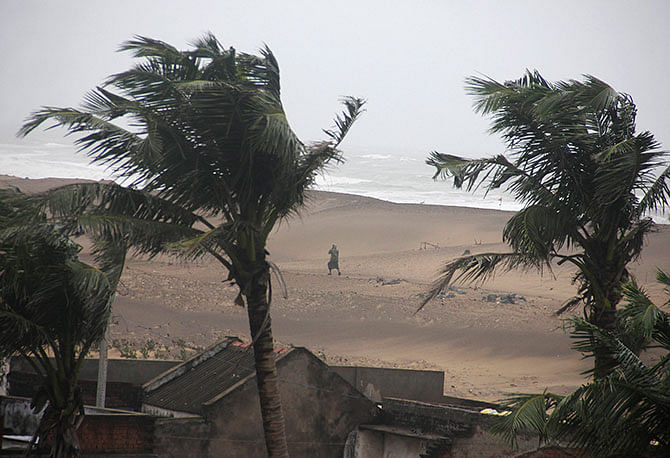Indian relief effort begins after Hudhud
Indian relief effort begins after Hudhud

Indian disaster teams have begun a relief operation after Cyclone Hudhud pounded the eastern coast, forcing as many as 400,000 people to flee.
Officials are assessing the damage in Andhra Pradesh and Orissa states, where eight people have been killed.
The cyclone wrecked homes, uprooted trees and power lines, blocked roads and damaged crops in the two states.
Further heavy rains have been forecast in Orissa, prompting fears of flooding in the wake of the cyclone.
On Sunday the cyclone, classed "very severe", brought winds of 205km/h (127mph), as it passed over the coast near the city of Visakhapatnam.
The storm has now weakened with speeds coming down to 50-70km/h (31-43mph) and rains are forecast in at least four states. It is feared a storm surge of up to 2m could inundate low-lying areas.
Reports say 24 disaster relief teams, 155 medical teams and the navy have been deployed in the affected areas, where hundreds of thousands of people have taken refuge in 223 relief camps.
TV footage showed downed electrical poles, uprooted trees and debris strewn on the streets of Visakhapatnam, one of the largest cities in south-east India and home to a major naval base.

Andhra Pradesh Chief Minister N Chandrababu Naidu said that while the early evacuations had saved lives, the cyclone had caused "huge damage" to buildings and crops in the coastal districts.
Five deaths were reported from Andhra Pradesh state and three from Orissa state, mostly because of injuries from collapsed walls and falling trees, reports said.
India's eastern coast and Bangladesh are routinely hit by cyclonic storms between April and November which cause deaths and widespread damage to property.
A super-cyclone in 1999 killed more than 10,000 people in Orissa.
Last October as many as 500,000 people in India were evacuated when a severe cyclone called Phailin swept through Orissa and Andhra Pradesh states.